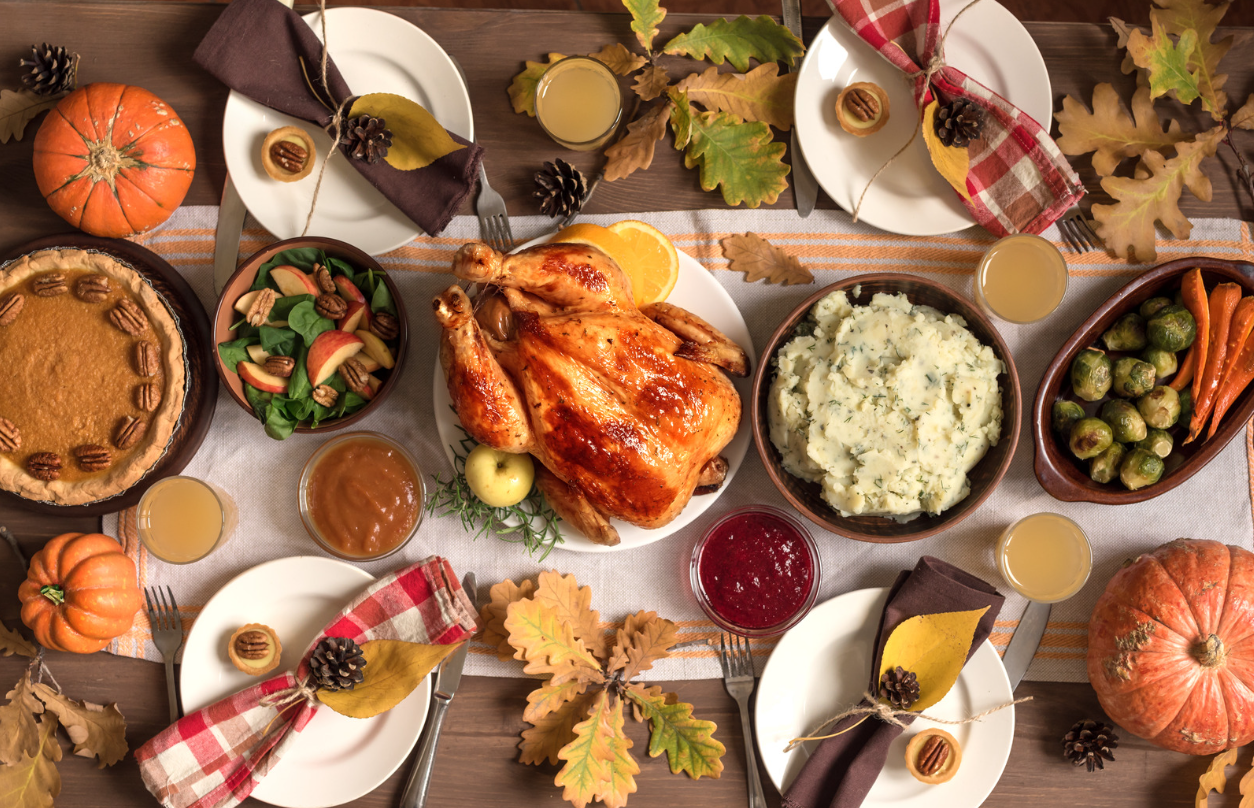As we approach Thanksgiving and the holiday season, we encourage you to reflect on all we have to be thankful for this year and how we all can work towards a more sustainable holiday.
According to the Natural Resources Defense Council, about 200 million pounds of turkey meat are trashed over the Thanksgiving holiday week. To put that in perspective – that amount of turkey could meet more than 500 million adults’ recommended daily protein intake. And that’s just the turkey!
This year, challenge yourself to reduce food waste at your table using some of the tips below. Also check out a clip of our Director of Campus Sustainability talking about these and other tips on WUSA9!
Plan Ahead: Plan your meal ahead of time. Choose recipes that use ingredients you already have (this is a good time to clean out your pantry!) and make a list for those you need. Stick to your list when shopping to avoid buying too much of any one food.
- SaveTheFood.com’s Guest-Imator will provide an estimate for how much food you need based on the number of guests and menu.
Coordinate: Coordinate with your guests if they are contributing dishes to the meal. If guests are contributing, make sure you know what food they are bringing to avoid any duplicates and waste.
Know what works…and what doesn’t: If you always seem to have leftovers of one dish – be it a jello salad or mashed potatoes – avoid it or make a smaller portion for the guests that do eat it.
Buy local: When buying ingredients for your meal or decorations, such as pumpkins, squash, potatoes, apples, etc., buy them locally. Visit a local farm, farmers market, or small grocer. Supporting our neighbors is better for our communities and environment.
Consider adding more plants to your meal: As you consider your meal options, try to replace one or two meat dishes with extra sides or a plant-based dish. Reducing the amount of meat consumed is one of the most significant ways you can create a healthier and more sustainable meal. If you want to go further, craft an entirely plant-based meal for your family and friends.
Make dishes from scratch: Preparing dishes at home is healthier for you, your guests, and the environment. Avoid buying processed foods and try baking dinner rolls, pies, and other items you might normally buy at home. You may even start a new tradition by doing so!
Use the whole vegetable: In many dishes, leaving the peels on your potatoes, carrots, and other veggies is healthier and tastier. Peels are home to extra fiber and nutrients, and contribute flavor and texture to a dish. Skipping peeling also saves time when preparing your meal!
Be creative: Do you have leftovers from your holiday meal? Luckily there are countless ways to repurpose a Thanksgiving meal – as soups, salads, sandwiches, and more. Visit your favorite recipe website for inspiration!
Compost: Creating intricate meals can generate a lot of waste. Be sure to take advantage of compost opportunities in your area. You can also consider starting your own backyard composting bin.
Donate to a Food Pantry: In addition to reducing the amount of food waste at your own table, Thanksgiving is a time to think about ways to help others who don’t have a steady food supply.
After your meal, take a look at your extra non-perishables. Consider donating unopened cans, pasta, rice, etc. to a local food pantry or if you are on or near campus, to Cardinal Cupboard in McMahon B05.
Other ways to have a more sustainable holiday:
- Decorate with natural materials: Looking to create a unique centerpiece? Collect pinecones, acorns, red and orange leaves, and fall wildflowers to add color and depth to your table.
- Use reusable dishware, glassware, and linens: Disposable dishware, glassware, and linens (napkins, tablecloths, etc.) are a major contributor to pollution and landfills around major holidays. Use reusables instead and have a plan for food storage for any leftovers.

